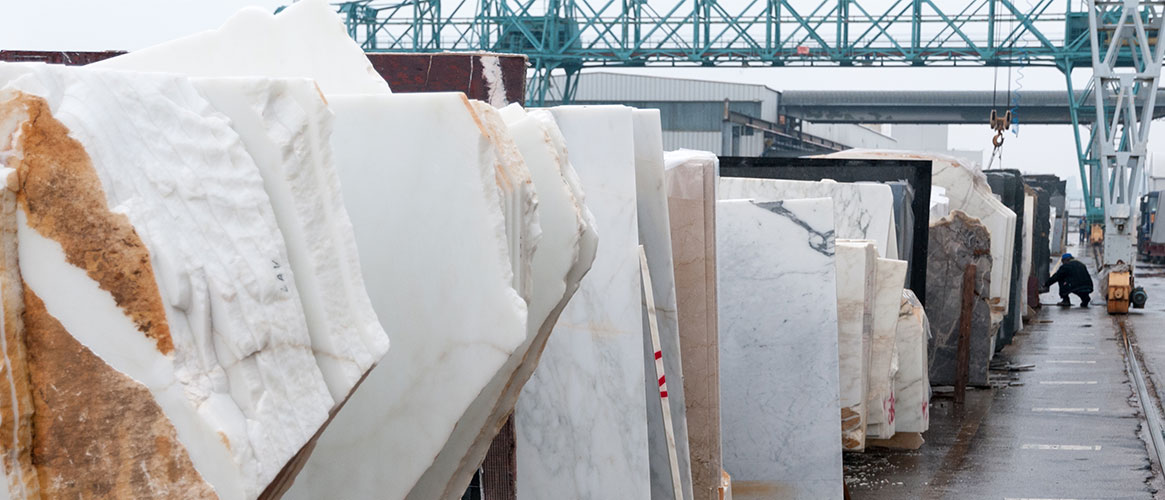Crush injuries and deaths in the stone fabrication industry are all too common. Often they occur just like this: A stone fabrication worker steps in between two 500-pound slabs stored on an A-frame rack, to position one for lifting and transportation by a crane. Before the crane clamps on, the slabs shift and fall to the ground, trapping the worker between them.
In this case, the worker was working in the fall shadow—the path the slab takes as it falls flat to the ground.
Avoiding this path whenever possible is a critical step toward workplace safety in the stone fabrication industry.
What your employees need to know about working with stone slabs
Working with stone slabs that can range from 500-to-4,000 pounds is unforgiving. Slab handlers must be alert, vigilant, and work safely at all times. There are no second chances when you are working with such heavy and unwieldy materials. Too often, according to the Occupational Safety and Health Administration (OSHA), workers suffer catastrophic or fatal injuries because they were in the fall shadow when a slab fell to the ground. Standing in between two slabs is one example, but not the only one. Other injury risks include:
- Slabs stored in an overloaded or damaged storage rack.
- Slabs not secured to the rack properly with restraining devices or tie-downs.
- Slabs leaning against a wall or fence.
- Slabs falling from an overloaded or malfunctioning crane or forklift.
What your employees need to do to safely work with stone slabs
As mentioned above, avoiding the fall shadow is the first step. In the opening scenario, what the worker did was unnecessary. Instead of standing in between the two slabs, the worker could have used a wedge at the top of the front slab, as shown in this video from the Natural Stone Institute (2:40 mark).
Your employees can further minimize injury risk and help prevent the large stone slabs from falling in the first place by taking precautionary steps, such as:
- Avoid overloading storage racks, forklifts, slab dollies, and cranes. Refer to the manufacturer’s instructions or information printed on the device for maximum load capacity.
- Inspect storage racks and mechanical equipment for damage daily.
- Report any damaged stones, storage racks, or lifting equipment to management.
- When using a forklift, raise the load far enough off the ground to clear obstacles but not any further.
- When retrieving a slab from an A-frame rack, remove any slabs in front of it, one at a time, until the desired one is exposed.
- When guiding a slab, work from one end or the other instead of being in the fall shadow.
What to cover at your safety meeting on working with stone slabs
Begin with a demonstration and explanation of the fall shadow, and discuss with your employees any challenges they face in trying to avoid it. Address those challenges and remind them that staying safe on the job is a top priority.
Review your procedures for safe handling when transporting, loading, and unloading stone slabs. Pre-plan each day’s work to identify hazards and the steps to take in order to mitigate them. This includes reminding your employees to follow manufacturer’s instructions on load capacity for racks and mechanical aids. Let your workers know where the instructions are and where the information is printed on the devices.
Demonstrate how to safely use forklifts, slab dollies, cranes, and other material handling equipment, including how to inspect it for damage.
Crush and struck-by injuries are a risk stone fabrication workers face every day. Awareness of and avoiding the fall shadow puts your workers in a better position to avoid injury and escape the area, should one of these large slabs fall to the ground.

